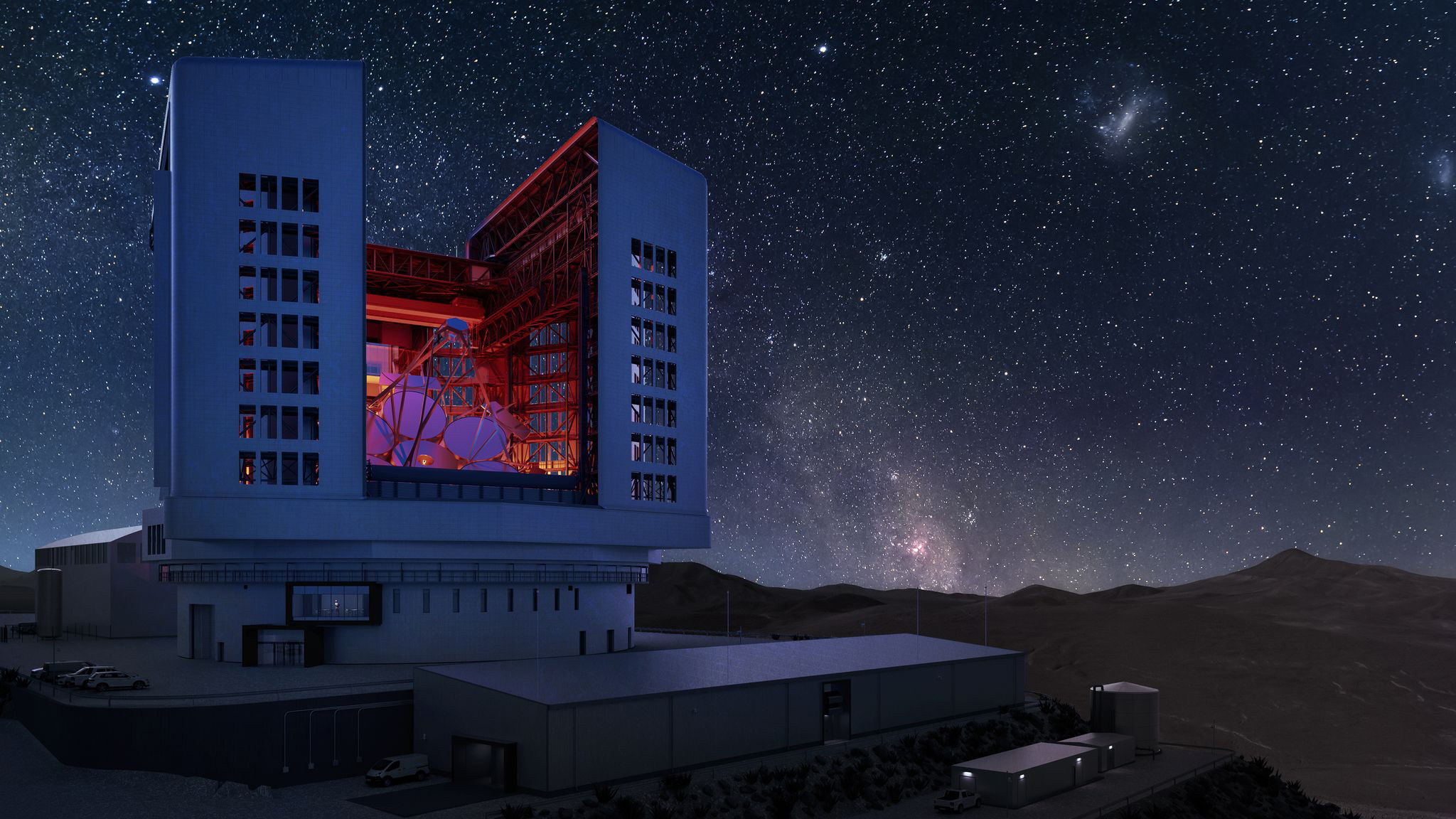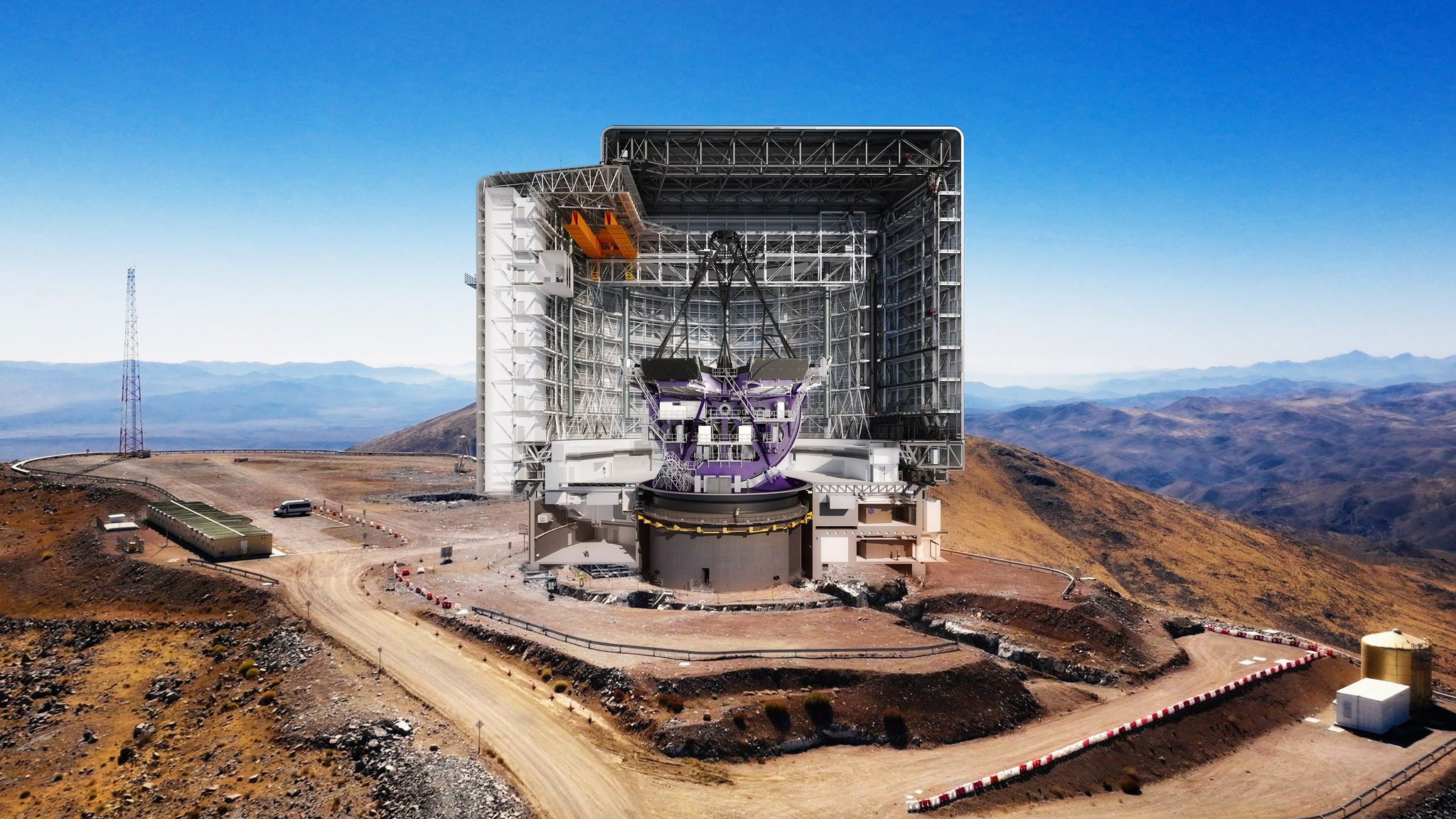
The Giant Magellan Telescope and IDOM announced today (June 13) that the telescope’s enclosure, one of the world’s largest astronomical facilities, passed its final design review and is now ready for construction in Chile.
The review marks a major milestone for the telescope, which is now 40% under construction and on track to be operational by the early 2030s, not to mention another celebratory occasion for the 14 international research institutions involved in the colossal multi-decade endeavor, including Texas A&M University as a founding partner.
“A team of 10 international subject matter experts validated two years of design work by IDOM and the Giant Magellan Telescope," said Bruce Bigelow, site infrastructure, enclosure and facilities manager for the Giant Magellan Telescope. "The final design of the enclosure is unique and an important feat of technical management, design and engineering. We are very grateful for the committee’s professional assessment as we proceed towards construction. We’re also incredibly excited to be moving toward the procurement stage, where we will begin soliciting proposals to begin construction.”
As one of the largest mechanized buildings ever constructed, the 65-meter-tall enclosure is a true feat of modern engineering and precision manufacturing. At more than 5,000 metric tons, the enclosure can complete a full rotation in four minutes and is equipped with 46-meter-tall shutter doors that reveal the 25.4-meter telescope for unobstructed scientific observations. The smart building was cleverly designed to control the telescope’s operating environment by protecting seven of the world’s largest mirrors as they track celestial objects across the sky more than a billion light years away.
"The enormous building houses the telescope's 125-foot tall structure and 80-foot diameter primary mirror and protects it from the environment," said Texas A&M astronomer and Founder's Representative Dr. Darren L. DePoy, inaugural holder of the Rachal-Mitchell-Heep Endowed Professorship in Physics in the Department of Physics and Astronomy and deputy director of the George P. and Cynthia Woods Mitchell Institute for Fundamental Physics and Astronomy. "But the building can also open fully and rotate to allow the telescope to look clearly at any part of the sky. When complete. it will be one of the largest moving structures in the world."
DePoy, who serves as associate dean for research infrastructure in the College of Arts and Sciences, has built various instruments and components for the GMT along with fellow astronomers and researchers within Texas A&M's Charles R. ’62 and Judith G. Munnerlyn Astronomical Laboratory. Their GMT-related projects include the development, assembly and testing of hundreds of pneumatic actuators that will support the telescope’s massive 16.5-ton primary mirror and keep it precisely aligned as well as the software that will control the precise movements of the mirrors.
Following the successful conceptual design of the European Southern Observatory’s Extremely Large Telescope dome, IDOM continues to make important contributions to the design of astronomical facilities with the Giant Magellan Telescope — built by an American-led international consortium headquartered in Pasadena, California. The breadth of talent afforded by the consortium is stimulating America’s economy with construction, testing and design work on the telescope in 36 states.
“We formed a strong and productive partnership with IDOM as the enclosure designer,” said Giant Magellan Project Manager William Burgett. "Their well-known architectural accomplishments combined with their engineering expertise in large and complex movable structures has been critical to the design of this unique structure. The dedication and attention to detail that the IDOM team has demonstrated has been instrumental on our way to becoming one of the most powerful ground-based telescopes in the world.”

IDOM began developing the Giant Magellan Telescope enclosure design more than two years ago following a competitive, global search and extensive evaluation process.
“Our team approached the challenge of the Giant Magellan Telescope enclosure, knowing that this structure would be responsible for enabling some of the most important scientific discoveries of our lifetimes,” said IDOM North American President Tom Lorentz. “We are proud to have delivered a successful design and look forward to the Giant Magellan Telescope’s success.”
Construction of the telescope components housed within the enclosure are advancing rapidly. For example, during the past year, fabrication commenced on the seventh and final primary mirror in Arizona, while manufacturing of the 39-meter-tall mount structure began in Illinois. Other advancements include near completion of the telescope’s first adaptive secondary mirror and significant progress on a suite of high-resolution imagers and spectrographs in Arizona, California, Massachusetts and Texas.
These optical technologies will enable the Giant Magellan to boast a remarkable tenfold increase in resolution compared to the Hubble Space Telescope and deliver up to 200 times the power of today’s best telescopes. The breakthrough technologies will empower scientists worldwide, offering unparalleled insights into the evolution of the universe, the origins of chemical elements and the discovery of life on distant exoplanets for the first time.
With the enclosure design milestone complete, the Giant Magellan Telescope is now preparing a global search for a firm to leave their mark on the future of astronomy with construction of the enclosure.
